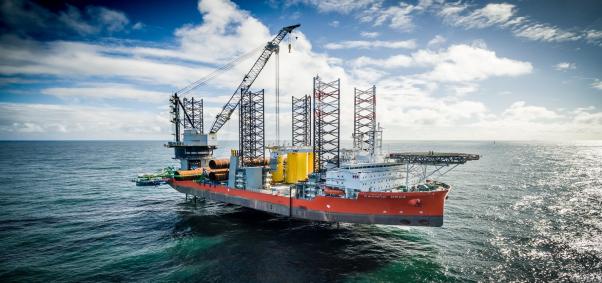
What the world must do to build climate-friendly cities
By Naina Lal Kidwai
This article was originally published in the Hindustan Times.
Naina Lal Kidwai is Chairman of Altico Capital Ltd. and a member of the Global Commission on the Economy and Climate.
As floods ravage India and buildings crumble, it is time to reflect on what and how we build, and how we address climate change. Globally, around $90 trillion is needed in infrastructure by 2030 to meet growing demand for energy, mobility, water and sanitation. Ensuring that this infrastructure is sustainable and resilient is both climate and budget-smart. New research from the World Bank finds that the overall net benefit of investing in climate-resilient infrastructure in developing countries would be worth $4.2 trillion over the lifetime of new infrastructure, with $4 benefit for each $1 invested. But this opportunity has a shelf life. We must act quickly or we will squander the last chance we have to put the world on a better growth path.
As demand for cement rises, India has an opportunity to lead the world on efficient, clean production. India is the fastest growing major economy in the world and has made great strides to set itself up as a global leader in solar energy and climate action. On the other hand, India is home to 11 of the 12 cities in the world with the worst air quality, and is one of the most climate vulnerable nations in the world.
India’s cement industry sits at the heart of this low-carbon growth opportunity, playing a critical role in the construction of modern infrastructure as well as of housing and commercial buildings. In India and Africa, cement production is predicted to triple in the next 35 years as urbanisation drives demand. This rapid expansion in cement production puts pressure on the global effort to curb temperature rise to 1.5°C, as set out by the Paris Agreement. Currently one of the most carbon intensive industries in the world, the cement sector is responsible for an estimated 7% of global carbon emissions.
The good news is that recent research shows these “harder-to-abate” sectors – such as cement and steel – can be decarbonised at a cost of less than 1% of global GDP and with a marginal impact on the price of consumer products. Implementing new industrial technologies is one of the most cost-effective ways of reducing carbon emissions in emerging economies. Increasing efficiency alone could reduce energy consumption by 10% to 20%.
Some leading cement companies are already pioneering the way forward. The world’s fourth largest cement company, Heidelberg Cement, pledged to lower its emission reduction targets to align with the Paris Agreement goal , to produce carbon neutral concrete by 2050. Here in India, the LafargeHolcim companies ACC and Ambuja Cement, Dalmia Cement and Cementos Argos,have emerged as sector leaders in the movement to reduce carbon emissions. This isn’t just about climate, it is also about competitiveness. Dalmia Cement has created the lowest cement carbon footprint in the world, and in doing so has increased profits by 70% and cut costs by 27% in 2015-2016.
Both the LafargeHolcim companies in India are producing various types of blended cements with a Carbon Foot print as low as 280 kg/ton of cement. Ambuja cement has gained recognition for sustainability excellence by pioneering efforts to co-process waste as a low-carbon source of energy and by the manufacturing of blended cement, which has the capacity to Reduce emissions per ton to nearly half of the national average.
Co-processing facilities are installed in Clinker plants for waste utilization. This ability to use plastic waste in cement production kills two birds with one stone - unwanted mounds of plastic in landfills are destroyed and fossil fuel for energy is minimised . Government must help incentivise cement manufacturers to use plastic waste and help municipalities to segregate this in a way it can be utilised effectively . Massive afforestation by cement companies of native species in the mines, plants, colonies and community areas has created a carbon sink apart from enhancing the biodiversity and species conservation.
Reduction of carbon emissions requires such innovations in technology to be deployed at speed and scale. For this to happen, there needs to be a decisive shift in investments and regulations. Regulation has been markedly light so far, but the tightening of building regulations is a good example of how to promote industrial emissions reductions and better living conditions simultaneously. Attention to new building materials produced by cement manufacturers such as “ cool walls” In India will reduce the carbon emissions from air conditioning even as demand for air conditioners grows . The government promoted Energy Efficiency Services Limited (EESL) in India implements the largest energy-efficiency portfolio in the world and has made products more affordable to a wider market, saving US$2.3 billion through its lighting program since 2010 - we need more such initiatives.
So how do we get from here to there?
First, industry commitments can be secured by leading companies, including cement, steel, heavy transport, and chemicals. So far, 29 Indian companies across sectors have committed to science-based targets in line with Paris Agreement goals. This positions India as 5th in the world when it comes to companies turning commitment into action.
Second, there must be an emphasis on collaboration between the public and private sectors in creating favourable market conditions for low carbon technology. Public policies can guide investment choices that reduce inequality and encourage sustainable development. If implemented well, carbon pricing programmes combined with fossil fuel subsidy reform could generate an estimated US$2.8 trillion in government revenues per year in 2030, equal to the total GDP of India today.
Third, we must advance innovation globally. The 2018 Joint Declaration of Innovation Partnership between the governments of India and Sweden will guide the transformation of heavy industry in developed countries and the construction of sustainable industry in developing countries. This partnership is an important step in international collaboration to secure a sustainable future for heavy industry.
The IPCC’s 2018 Special Report found that limiting global temperature rise to 1.5°C would substantially reduce the risks of climate change. Meanwhile, the New Climate Economy’s 2018 Report found that bold climate action can deliver US$26 trillion In global economic benefits. This is the crossroads at which we find ourselves. The pathway for a future of inclusive growth in the 21st Century requires national climate plans which are in line with a 1.5°C world ahead of 2020, before it’s too late.
Governments and companies must seize this moment together to drive the world’s rapidly emerging new climate economy. There is no better place to start building tomorrow’s world than India.






